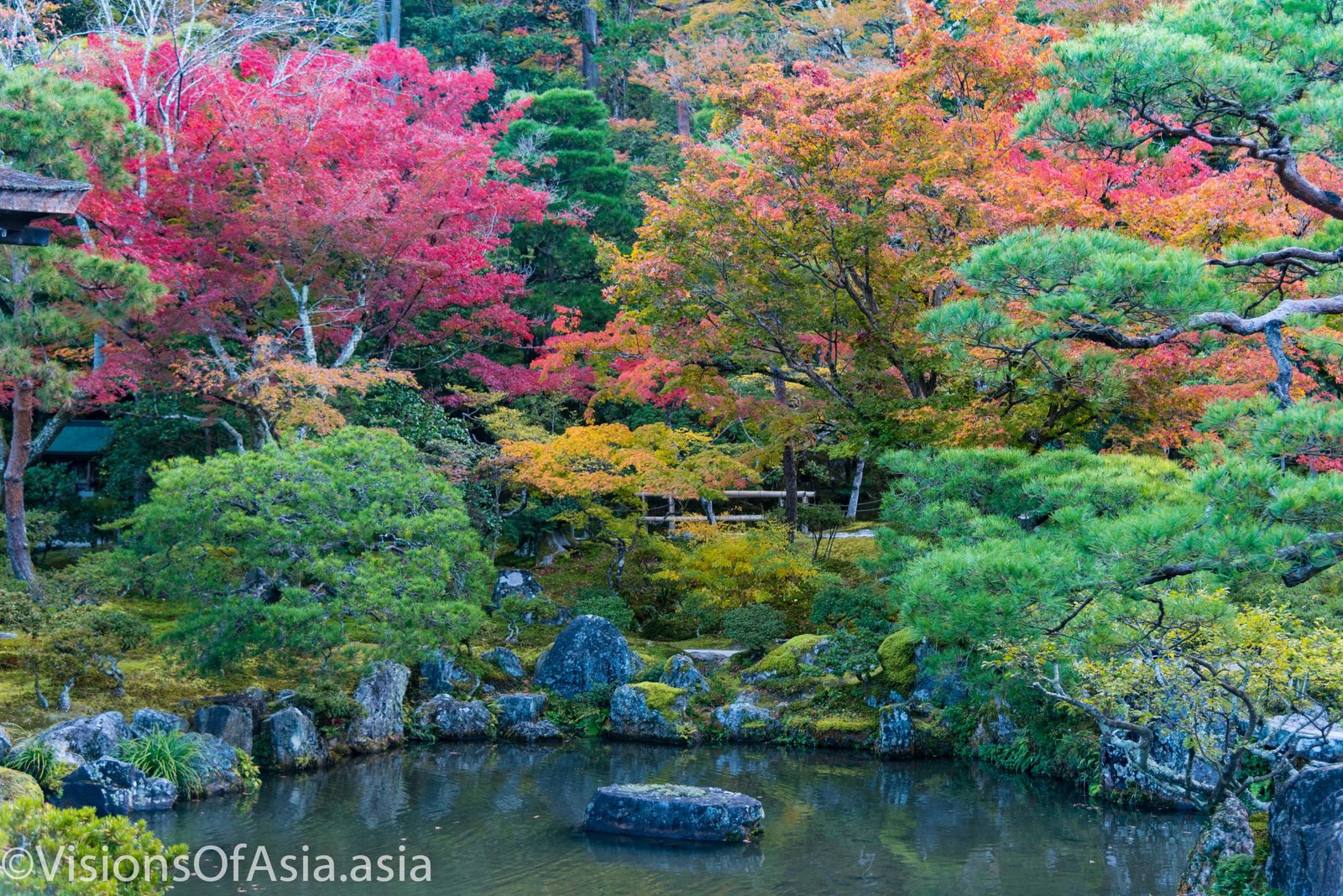Writing about Kyoto is also writing about the Japanese essence, as the city is so much enshrined in traditional Japanese culture. As autumn paints the city in vibrant hues, Ginkakuji becomes a true embodiment of the Japanese essence. Fall gives to this garden which is already magnificent additional colors literally making the place an enchantment to the eye.
A place to visit before the crowds arrive
Like many touristic attractions, Ginkakuji is best visited when there are not so many people around, which involves arriving quite early. The shrine opens at 8.30 AM, and at that time, you already have some tourists around (mostly Westerners, Asian tourists tend to wake up later). Arriving there can be a bit complicated, as there is no metro near to the shrine.Either you take a bus to the shrine from Central Kyoto station, or you must combine metro + bus. As I mentioned earlier, I was staying near the Fushimi-Inari shrine, which is some distance away from central Kyoto. I thus opted for the train from Fushimi-inari on the Keihan line (the one coming from Osaka). The closest metro station for Ginkakuji is the Demachi Yanagi station. Once you exit the station, you must take bus n° 102 heading towards 市営急行 (Kinrin Shako mae).
Reaching the shrine then involves some ten minutes leisurely walking, as Ginkakuji is established on a small hill, and is quite remote from the rest of the city. If you are accustomed to living in a bustling metropolis, the peacefulness of a small town in Japan can be quite soothing.
Fall photography
Of course, Ginkakuji is the most beautiful experience you can have in Japan, but do not neglect daily shots outside the shrine, while you walk towards it. The fall season gives you a lot of occasions of playing with colors and atmosphere.
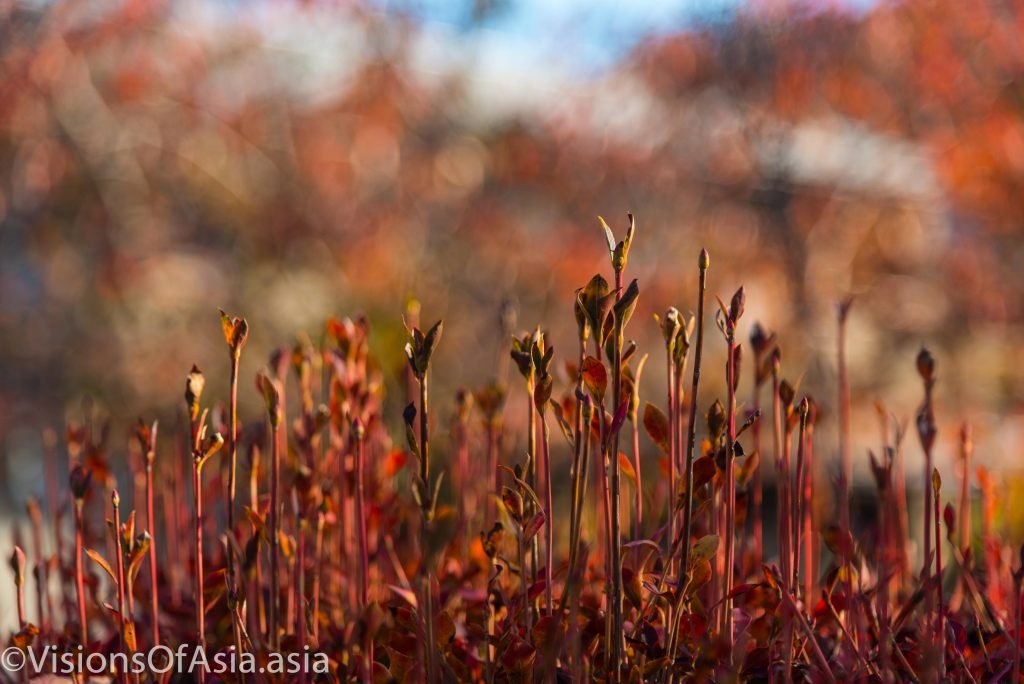
As it is winter, and you are quite early out, you can enjoying the very delicate razing and warm light which gives a delicate relief to the subjects. This picture was taken on the path to Ginkakuji, in a small bush with autumn folliage in the background. Kyoto is such a scenic Japanese city, that subjects of photography are all around you.
The Ginkakuji temple
Ginkakuji, also known as the Silver Pavilion, is a Zen temple nestled in the eastern foothills of Kyoto. Built in the late 15th century, this UNESCO World Heritage Site holds profound historical significance.
Ginkakuji in Japanese means “Silver Pavillon”, because in the original plans of a XVth century Shogun, Ashikaga Yoshimasa, the plan was to have the whole temple covered with a silver foil. Unfortunately, Yoshimasa died before the temple was completed, and Ginkakuji has been left as such uncompleted ever since. This, at the same time, is an example of Japanese philosophy, where “wabi-sabi”, or imperfection serves also as a way of showing beauty.
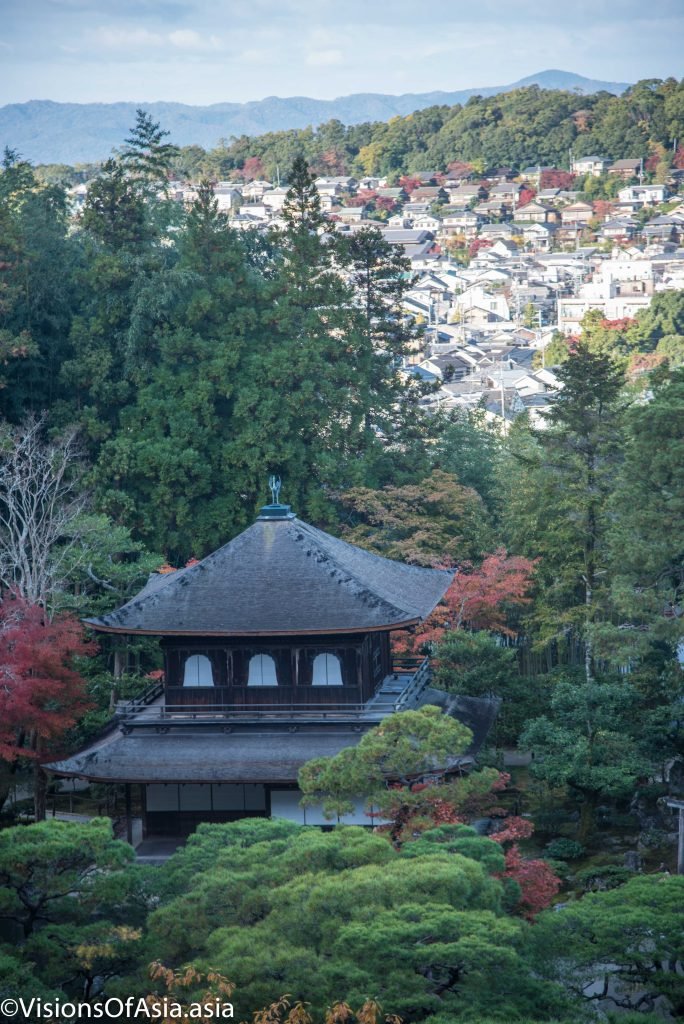
Since you will have come before the crowds, in the delicate fall weather, you will be in the best position to appreciate the peacefulness of the place. You understand better why this place was originally designed to be a mountain villa for the Shoguns away from the main bustling Kyoto.
Embracing Nature’s Palet
Visiting Ginkakuji in fall is an absolute delight. As the leaves transform into a kaleidoscope of golden, crimson, and burnt orange, the temple grounds become a picturesque wonderland. Stroll through the meticulously manicured gardens adorned with maple and cherry trees, allowing the vibrant colors to envelop your senses.
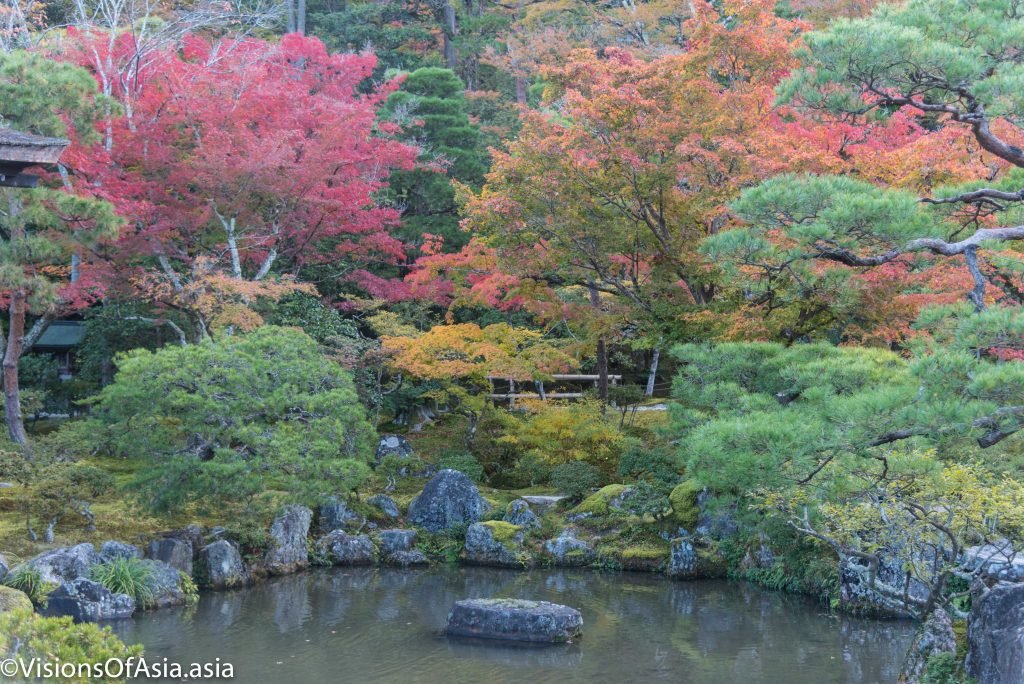
You will maybe notice at the entrance, a gardener tending the moss lawn with a pair of tweezers. The moss lawn, itself, reflects impermanence as its beauty ages gracefully.
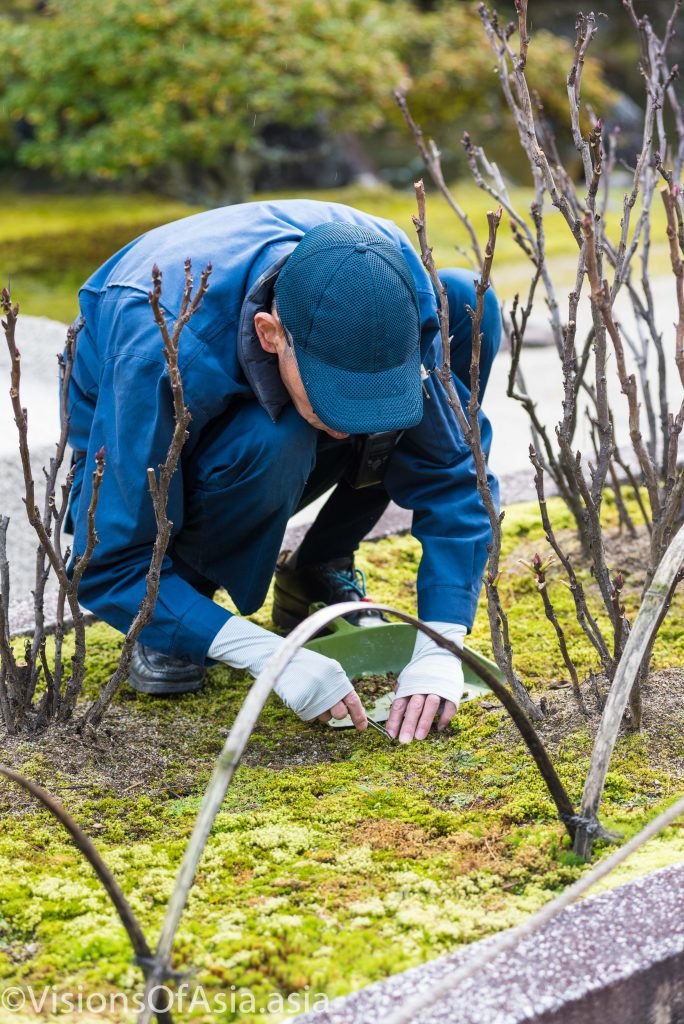
The care of a moss lawn with tweezers is probably one of the most strikingly Japanese details that you will see during your visit The minute attention going into maintaining this lovely garden is somehow complementary of the imperfection shown in other features, and probably also tells us more about the Japanese essence. Beauty is also accepting imperfection as its constituent.
The Path of Enlightenment:
It is also a spiritual statement, as Ginkakuji is a temple first and foremost. Explore the temple’s famous Togudo Hall, where the principal deity is enshrined. Witness the elegant interior, adorned with exquisite artworks and calligraphy. As you walk the Philosopher’s Path, named after the renowned philosopher Nishida Kitaro, reflect upon life’s profound questions and find inspiration in the temple’s serene atmosphere.
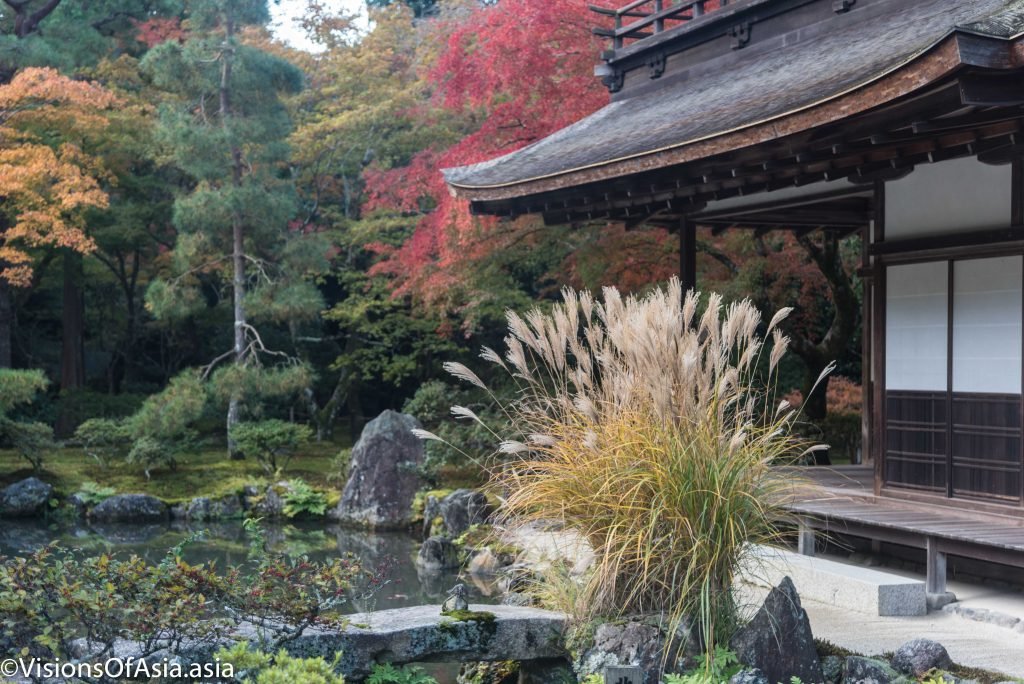
And to follow this, do walk with me around Ginkakuji garden in an exquisite moment of peace:
Ginkakuji, a moment out of time
In conclusion, visiting Ginkakuji is experiencing a moment out of time, inciting us to take life a step slower and more quietly. As you wander through the srhine grounds, witness the awe-inspiring beauty of fall and immerse yourself in the serenity that Ginkakuji offers. Let this incredible place awaken your senses and leave an indelible mark on your heart, forever capturing the essence of Japan’s rich heritage.

